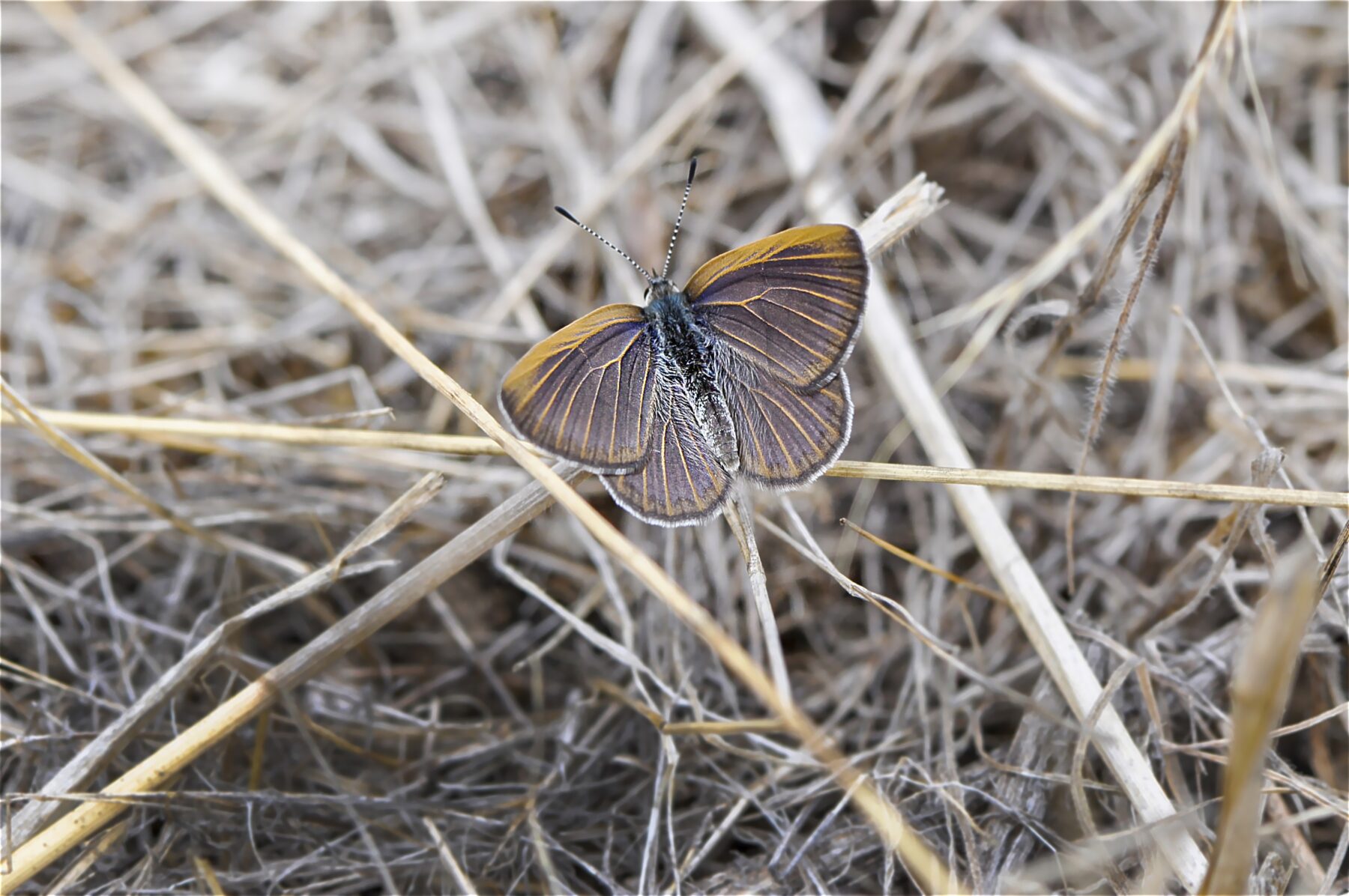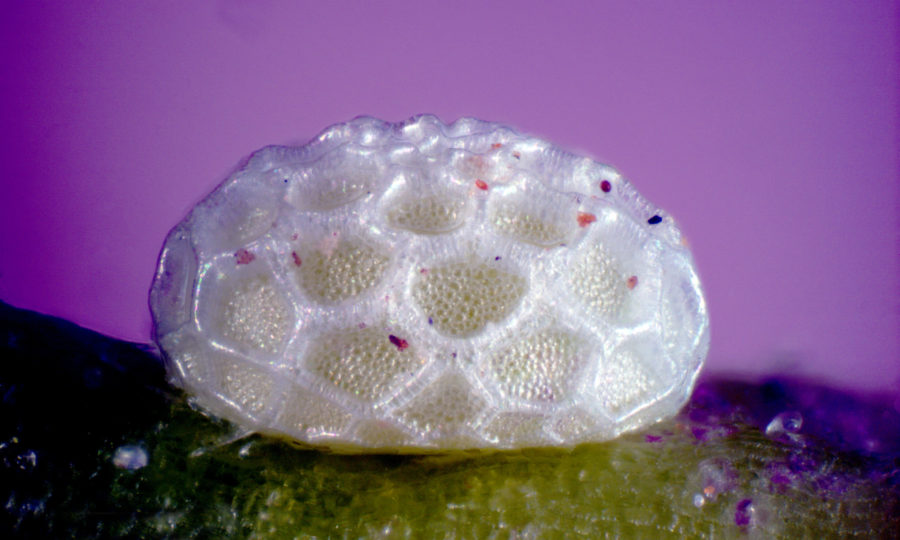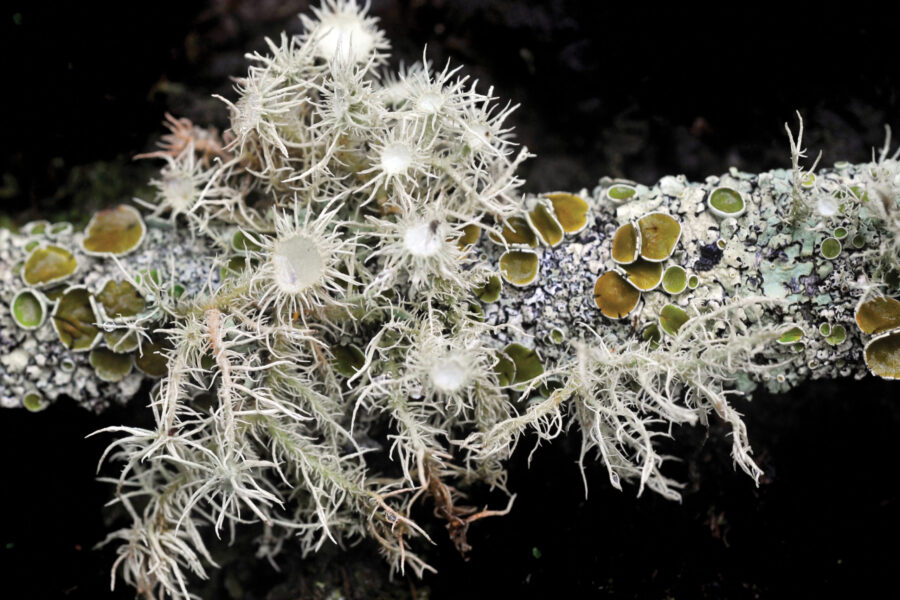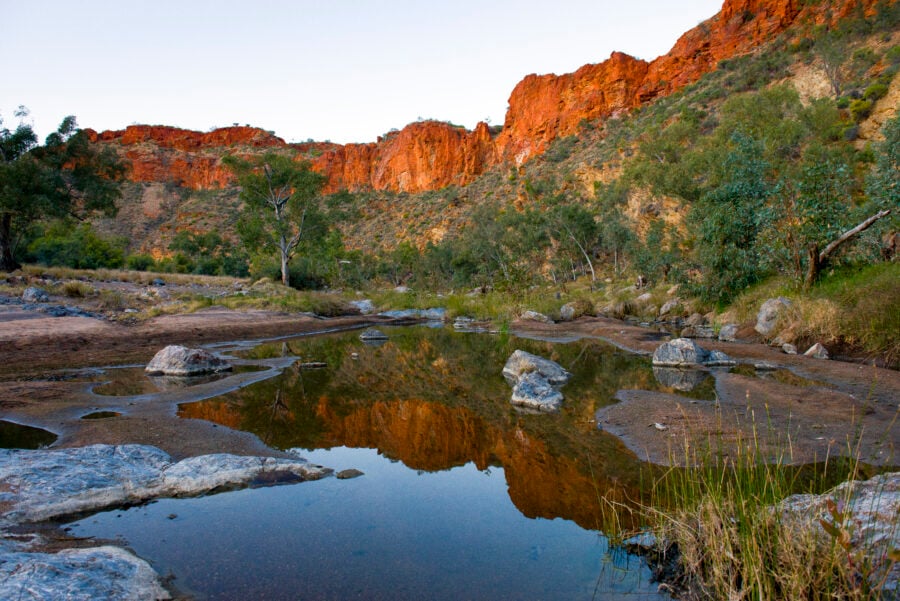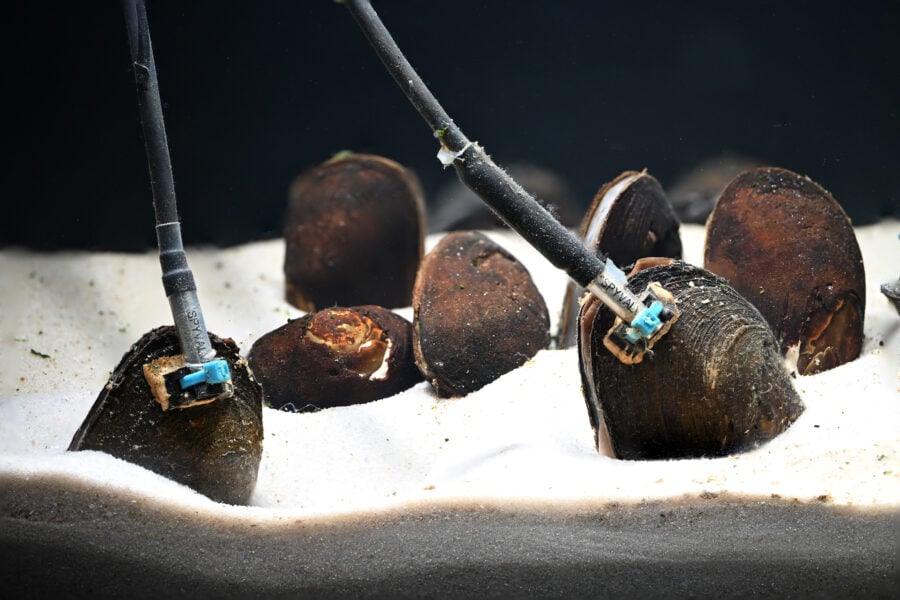Fabian Douglas wasn’t expecting a butterfly bonanza at Western Victoria’s Lake Wyn Wyn. He and fellow entomologist Frank Noelker had joined birdwatchers there that sunny spring day in 1993, so the focus was on other fauna. Fabian thought, “I won’t make a spectacle of myself getting out the net – there’s not going to be anything rare here anyway.” So he’d set off through the boobialla with binoculars, no butterfly net in hand.
“Then I saw this butterfly go through in the middle distance,” Fabian recalls. At first, he assumed it was a common dusky-blue – although out here on the salt lake’s flood plain it was a long way from its larval food plant. Common dusky-blue caterpillars nosh on parasitic cassytha vines, but those were some distance back among the eucalypts.
“I’d better get the net,” Fabian told Frank. The other birdwatchers looked on in amusement when he went back to fetch it. “Then I saw another butterfly, bolted after it and got it,” Fabian says. “The minute I looked in the net, I could see it was different. I looked up and said, ‘Hey Frank, we’ve got a new species.’”
The new-to-science butterfly they’d stumbled upon was the golden-rayed blue, which Fabian and Michael Braby later described and named Candalides noelkeri in honour of Frank Noelker, who died in 1996.
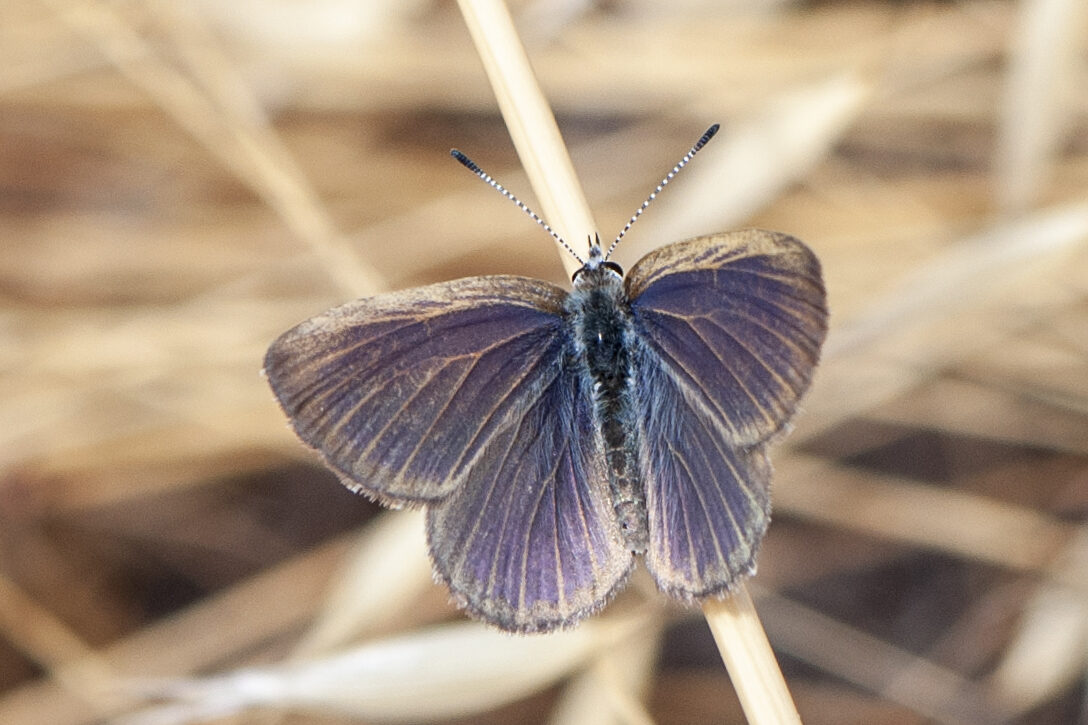
Found only in Victoria’s Wimmera region where it lives on the fringes of ephemeral salt lakes, the golden-rayed blue depends on creeping boobialla (Myoporum parvifolium). The picky species’ hungry caterpillars feed on the boobialla’s leaves, and the plant’s white, star-shaped flowers provide nectar for adult butterflies.
“They have a strong preference for the local form of boobialla,” explains Fabian, who surveys the species for Zoos Victoria. That’s a problem for the endangered golden-rayed blue, because its reliance on the Wimmera’s creeping boobialla binds it to the small areas where the low-growing shrub still grows.
Jessie Sinclair, invertebrate conservation coordinator at Zoos Victoria, describes the butterfly’s range as a “long, thin band that wraps around the Wimmera lakes and along the Wimmera River”. But this unique pocket of Western Victoria is surrounded by broadacre crops such as wheat, barley, lentils and canola. There’s not a lot of habitat left for the golden-rayed blue.
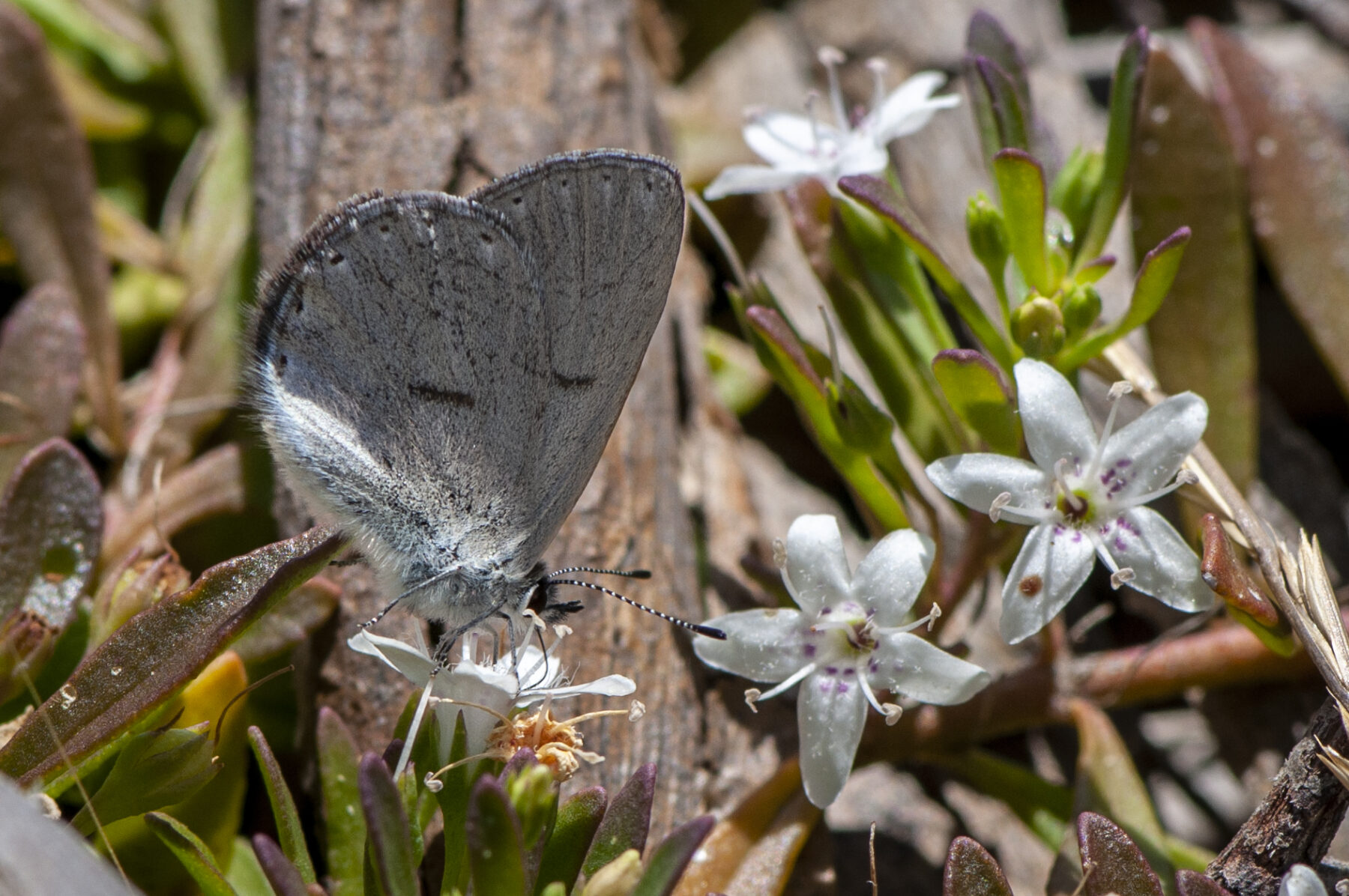
Enter Zoos Victoria’s Fighting Extinction program and Dalki Garringa Native Nursery, partners in a plan to restore and extend golden-rayed blue butterfly habitat by planting the Wimmera form of creeping boobialla. Where the boobialla goes, they reason, the golden-rayed blue butterfly will follow.
Dalki Garringa – which means ‘good growing’ in the local Wergaia language – is owned and managed by the Barengi Gadjin Land Council representing Traditional Owners from the Wotjobaluk, Jaadwa, Jadawadjali, Wergaia and Jupagulk peoples who collectively make up the Wotjobaluk Nations. Located near Wail, about a 20-minute drive north of the regional city of Horsham, Dalki Garringa Native Nursery is staffed by Traditional Owners, workers and volunteers from the surrounding area.
Nursing Boobialla
In addition to selling food plants and local native species, Dalki Garringa Native Nursery raises creeping boobialla from cuttings of plants growing at the nursery. The nursery’s mother plants were themselves grown from cuttings of wild plants known to support golden-rayed blue butterfly populations.
“They propagate really easily because that’s their survival mechanism,” explains Wotjobaluk woman Elizabeth Mace, the nursery’s operations manager. “In a flood, they can just snap and float to the next space, settle into the ground and throw roots within days. Then – poof! – up it grows again.” This means the nursery can grow and distribute thousands of creeping boobialla cuttings across the Wimmera to support golden-rayed blues.
The nursery takes a lot of pride in growing boobialla for the golden-rayed blue butterfly. “It has given the nursery purpose,” Elizabeth says. “We’re growing these plants, and they’re not just going to sit on a shelf. They’re going to their forever home.”

In winter 2023, about 2500 of the nursery’s boobialla plants found their forever homes in Zoos Victoria’s habitat-restoration projects; three sites where new habitat was planted, and three sites boosting boobialla at golden-rayed blue strongholds. Another 2500 plants have been distributed to Landcare groups, communities, schools and interested landholders so they can also plant habitat for the butterfly.
Rainbow Lake, a 75-minute drive from Horsham, is one such place. Just south of Rainbow, where the Wimmera and the Mallee meet, the lake is a decommissioned reservoir that now sports barbecues, a swimming pontoon and campsites. “They’ve made this community hub, and they welcomed us to put boobialla plants in,” Jessie says. “The Wimmera is full of amazing people connected by this common cause of the golden-rayed blue butterfly.”
Thousands of zoo visitors have also contributed to the conservation cause, helping fund habitat restoration for the golden-rayed blue by purchasing a ‘Totes for Wildlife’ bag. Sales of these handy totes fund Zoos Victoria’s conservation campaigns, and the butterfly bag was particularly popular. “It’s still the best-selling bag we’ve had,” Jessie says. “We sold about 18,000 of them.”
Creeping boobialla occurs naturally across southern Australia, and cultivars of the popular native are available throughout the Garden State, sold as hardy and attractive ground covers. But not just any garden-variety boobialla will suffice for the golden-rayed blue butterfly. “If you go and buy plants off the shelf, they could be coming from anywhere,” Jessie says. Zoos Victoria and Dalki Garringa Native Nursery have produced a label for their plants, identifying them as the Wimmera form, so local gardeners can know which ones will support golden-rayed blues. “In the Wimmera, if you want to grow this plant, [make sure you] plant the wild form,” Jessie says.
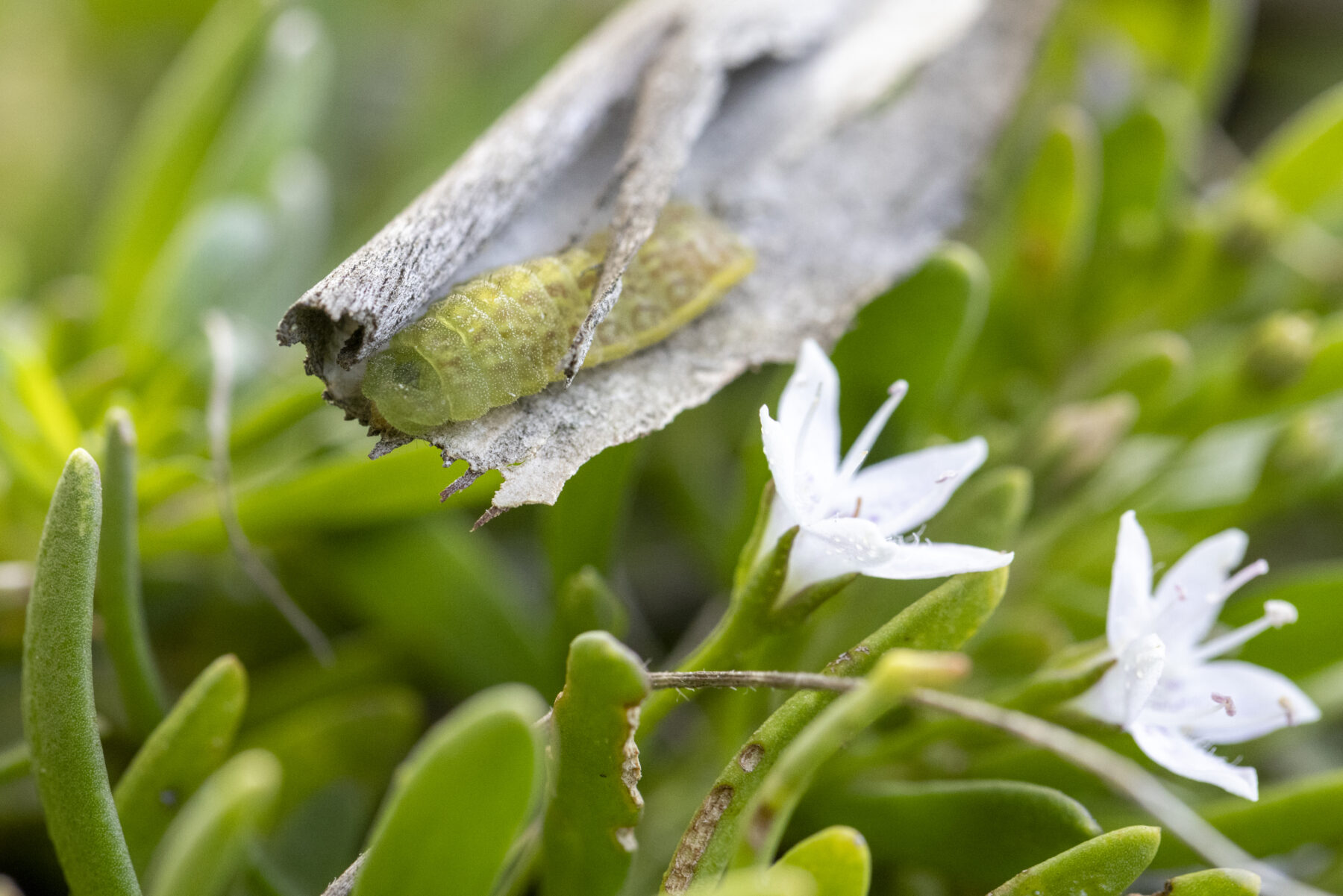
Home gardens can certainly provide habitat for the golden-rayed blue. “In someone’s yard in Horsham, they had big beds of Wimmera boobialla,” Jessie says. “That was one of the best survey sites for the butterflies in town. They seemed very happy there.”
The creeping boobialla’s prolific flowers offer a summer-long nectar source for pollinators. “It’s what you might call an ecosystem driver,” Fabian says. “Not only does it provide food and nectar for the golden-rayed blue, but its nectar also attracts a whole plethora of butterflies and other insects.”
Jessie already sees the boobialla at work in Zoos Victoria’s habitat restoration sites, even though they’re only a couple of years old. “We’re seeing lots of beetles, lots of bees and lots of ants using the plants, as well as lots of different butterflies,” Jessie says. “Grass blues are coming through here, as well as grass yellows, common browns and painted ladies.” Although golden-rayed blues haven’t taken up residence yet, the sites’ early success in attracting a variety of butterflies shows that suitable habitat can be re-established.
Plant it and they will come
Boobialla plants are well-equipped to tough out extreme weather. “The leaves are fleshy, so they hold on to a fair bit of moisture,” Elizabeth says. “And if it’s just too much and the top dries out, they’ve got a fleshy root, so they’re able to stay alive until the next rainfall.”
Too much rain, however, can flood and kill creeping boobialla plants. “In 2022, the Wimmera had a huge amount of rain,” Jessie says. “Lakes filled, the plants died, and when the water receded, there were virtually no boobialla left.”
But since then, Jessie and her colleagues have watched the battling boobialla respread. As Elizabeth explains, the creeping boobialla has evolved to live with the ephemeral lake system’s strong ebbs and flows.
Those cycles will become more frequent as the Wimmera’s changing climate brings increased droughts, bushfires and floods. The Wimmera’s boobialla – and the golden-rayed blue butterfly that depends on this plant – will need all the habitat Zoos Victoria, Dalki Garringa Native Nursery and Wimmera landholders and communities can create.
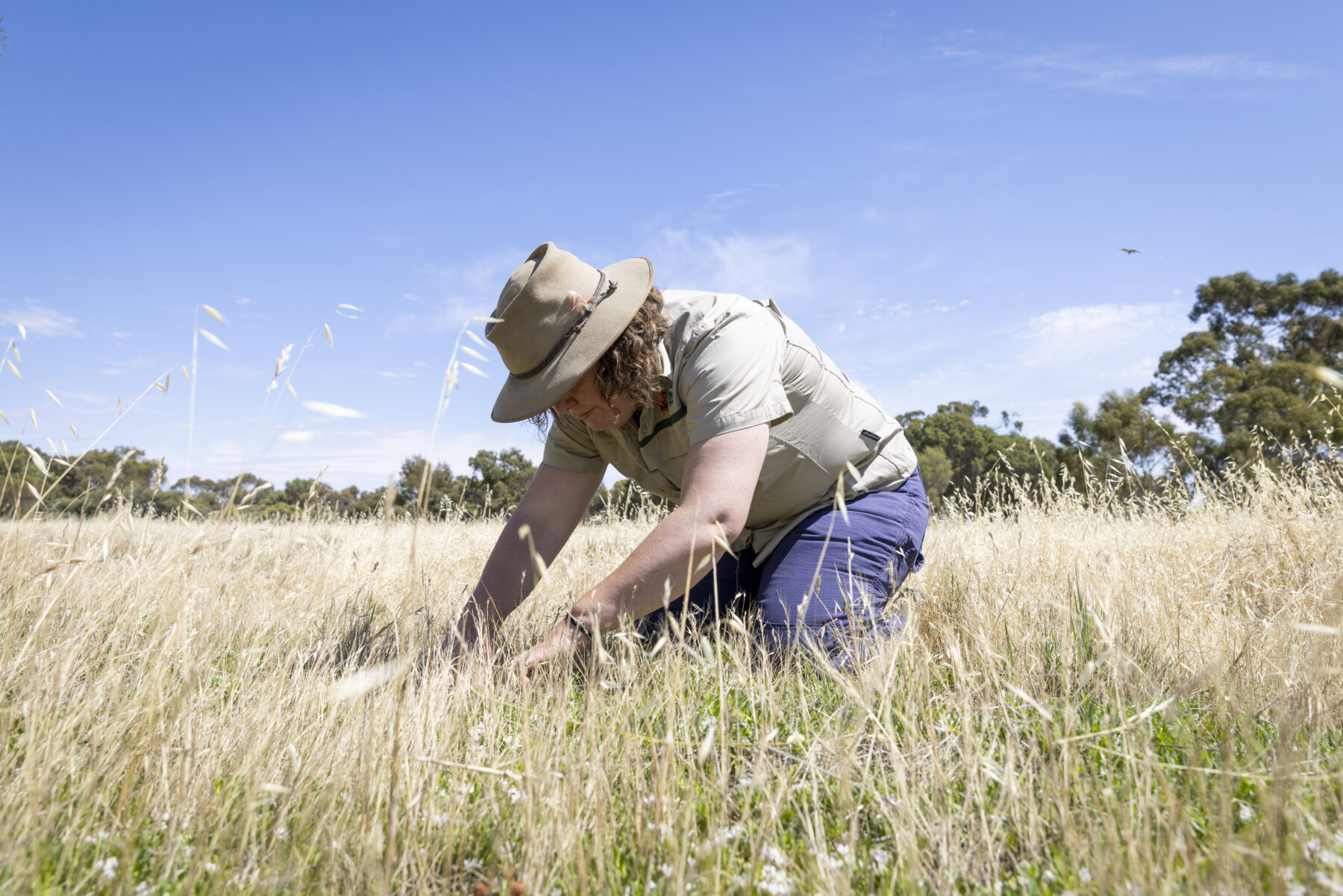
“We’re trying to make the habitat more resilient by choosing where we plant,” Jessie says. “We’ll say, ‘Hey, let’s put some boobialla a bit out of the flood zone for when the lakes fill, but let’s also put some down low for those drought conditions.’”
Four golden-rayed blue butterfly locations were flooded in 2022. The butterflies weren’t seen in those locations for two years. Then, in December 2024, Fabian spotted a pair of golden-rayed blues at Lake Hindmarsh.
“We assume that they’re just on their way back,” Jessie says, obviously relieved. “And that’s the thing about butterflies – they can repopulate [quickly]. Once they’re back in there, a female can lay hundreds of eggs.”
Instead of translocating butterflies, Jessie is relying on the golden-rayed blues to make their own way to newly planted habitat. “If they make their own way, we’ll know they can manage these distances,” she explains. “It will help with planning habitat restoration in the future.”
That future is looking brighter for the creeping boobialla and its butterfly now that habitat restoration is underway. It only needs some golden-rayed blues to cross the gaps. “It didn’t happen in 2024, but we’re confident they will come,” Jessie says. “It’s just a matter of waiting and keeping the plants flourishing. It could just take a windy day.”
